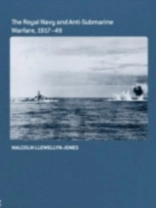An essential new account of how anti-submarine warfare is conducted, with a focus on both historic and present-day operations. This new book shows how until 1944 U-boats operated as submersible torpedo craft which relied heavily on the surface for movement and charging their batteries. This pattern was repeated in WWII until Allied anti-submarine countermeasures had forced the Germans to modify their existing U-boats with the schnorkel. Countermeasures along also pushed the development of high-speed U-boats capable of continuously submerged operations. This study shows how these improved submarines became benchmark of the post-war Russian submarine challenge. Royal Navy doctrine was developed by professional anti-submarine officers, and based on the well-tried combination of defensive and offensive anti-submarine measures that had stood the press of time since 1917, notwithstanding considerable technological change. This consistent and holistic view of anti-submarine warfare has not been understood by most of the subsequent historians of these anti-submarine campaigns, and this book provides an essential and new insight into how Cold War, and indeed modern, anti-submarine warfare is conducted.
Malcolm Llewellyn-Jones
Royal Navy and Anti-Submarine Warfare, 1917-49 [PDF ebook]
Royal Navy and Anti-Submarine Warfare, 1917-49 [PDF ebook]
Cumpărați această carte electronică și primiți încă 1 GRATUIT!
Format PDF ● Pagini 240 ● ISBN 9780203963975 ● Editura Taylor & Francis Ltd ● Publicat 2007 ● Descărcabil 3 ori ● Valută EUR ● ID 8156505 ● Protecție împotriva copiilor Adobe DRM
Necesită un cititor de ebook capabil de DRM












